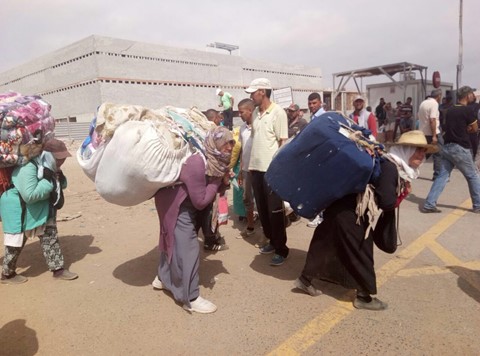Channel News Asia
In a village hut in Morocco’s southwestern desert, a group of white-clad locals sat and played the music of the slaves they are descended from to an audience of brightly dressed western tourists.
For centuries, the slave trade was a component of the trans-Saharan desert routes between Morocco’s ancient cities and Sub-Saharan Africa.
The locals of Khamlia claim descent from those forced to march north who, by rattling their chains, created trance-like rhythms to ease their pain.
Known as Gnawa, the mix of traditional music, chanting and dance now makes them money as they entertain increasing numbers of tourists.
“Sometimes we get requests from hotels and tourist camps to perform in the desert at night. This is how we earn our living,” band member Zeid Oujaa said.
They say they instruments they use, evoking their bitter history, have been handed down through generations.
As well as drums and a three-stringed bass called the hajhouj, they play the krakebs, a two-piece instrument held together by thread in place of the metal restraints that once bound their ancestors’ hands.
(Writing by Ahmed ElJechtimi; Editing by Ulf Laessing and John Stonestreet)







